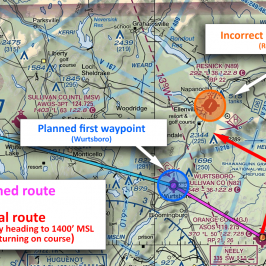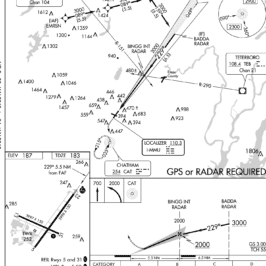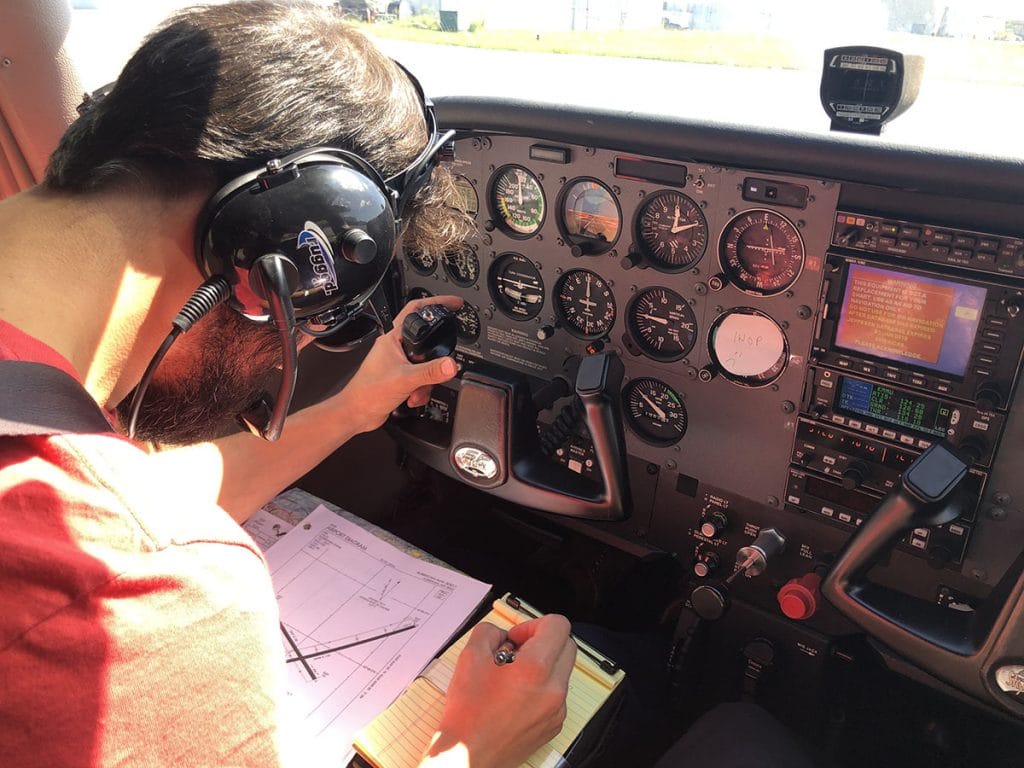
To my surprise, I have found that applicants are often unaware of how the Airman Certification Standards are utilized by evaluators in the course of administering practical tests. To be sure, most have seen or referenced it during their training, but they may not fully appreciate what it really means.
In addition to better understanding of specific tasks, breaking down the ACS might reveal a few big picture clues about what the FAA is trying to reinforce in airman training and certification activities. Let’s walk through the ACS and consider the Standards with the perspective of the organization whose “continuing mission is to provide the safest, most efficient aerospace system in the world” in mind.
We’ll start with a basic requirement: all skill elements in every task must be evaluated during a practical test. Also, unless otherwise stated, at least one Knowledge element and one Risk Management element must be evaluated, and any elements related to Knowledge Test deficiencies.
“Where does it say that,” one may ask? (click to expand)
Private Pilot ACS / Appendix 5: Practical Test Roles, Responsibilities, and Outcomes
The required minimum elements to include in the POA, unless otherwise noted, from each applicable Task are as follows:
• at least one knowledge element;
• at least one risk management element;
• all skill elements; and
• any Task elements in which the applicant was shown to be deficient on the knowledge test.
There is no expectation for testing every knowledge and risk management element in a Task, but the evaluator has discretion to sample as needed to ensure the applicant’s mastery of that Task.
If that’s new knowledge to you, or your flight instructor, it ought to change how you view the ACS. So with that in mind, let’s pick a few tasks.
II. Preflight Procedures, Task D. Taxiing (ASEL, AMEL)
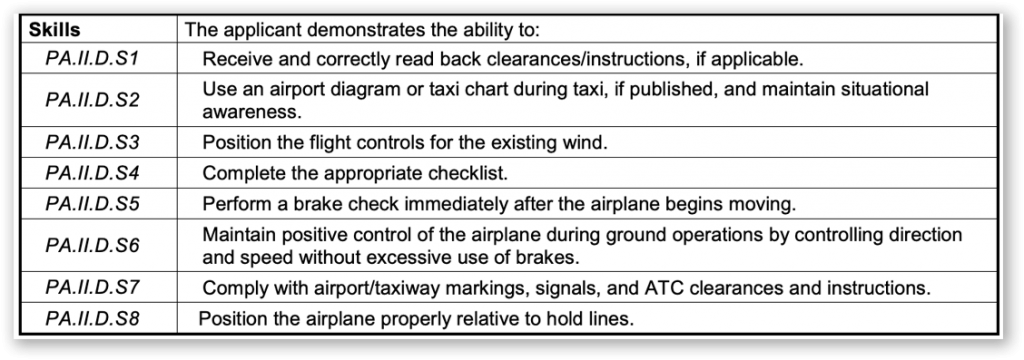
Element PA.II.D.S2 of the Private Pilot – Airplane ACS requires that the applicant “… use an airport diagram or taxi chart during taxi, if published.” In fact, this element also appears in the Commercial Pilot – Airplane ACS. A slightly reworded variant is present in the Airline Transport Pilot and Type Rating for Airplane ACS Taxiiing task as well.
Since it’s a skill, it must be evaluated, but all too often I have observed applicants begin surface movements without reference to the taxi diagram. When asked why, the usual response is that the airport in question is “home base” and that they’re already familiar. But that’s an even better reason to utilize a taxi diagram, since familiarity breeds complacency. Airports change over time: taxiways are renamed, runways are added or deleted, and ramps are closed for repairs. Taxiway diagrams improve situational awareness and may prevent a mental lapse which could to deviation from an ATC instruction, or worse.
IX. Emergency Operations, Task C. Systems and Equipment Malfunctions
We’re still looking at Private Pilot – Airplane tasks here. (The “PA” code in front of each element gives that away.) Let’s find PA.IX.C.S2 in the “Skills” section of the task, at the bottom.
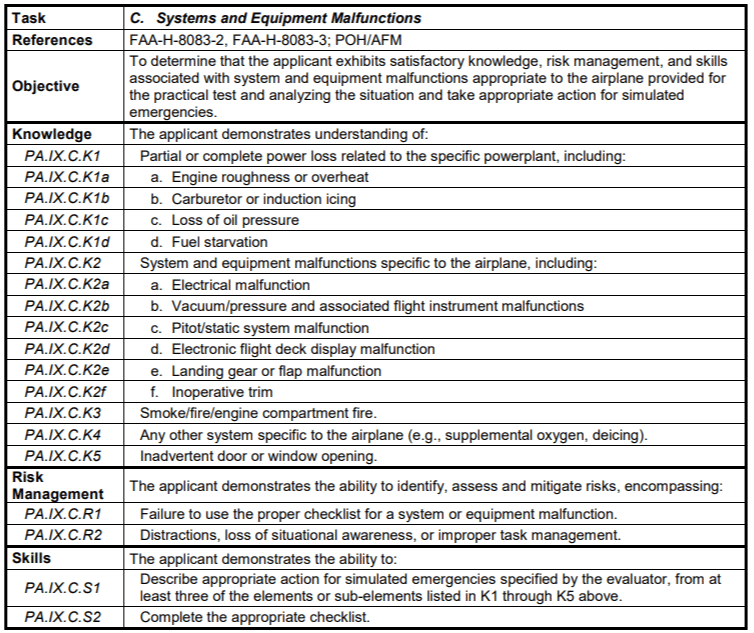
“Complete the appropriate checklist.” This skill element appears in many tasks across the ACS. In the Private Pilot – Airplane ACS alone, this skill appears 27 times! (27 again for Commercial, and 30 for ATP.)
As a skill element on its own, failure to complete the appropriate checklist is grounds for unsatisfactory performance on this task. And for good reason: most of these simulated failures may very well have corrective solutions available in the checklist.
- Electrical system malfunction: assuming an alternator “failed”, it may be possible to bring it back online.
- Powerplant power loss: perhaps a tank ran dry or a fuel shutoff valve was inadvertently adjusted.
- Pitot/static system malfunction: backup input sources may be available (i.e. alternate static.)
In any case, the manufacturer’s checklist may provide guidance on how to fix the problem before proceeding with emergency procedures which may not be required.
Here, “… failure to use the proper checklist” also appears as a Risk Management element (PA.IX.C.R1). Can you hear the ACS whispering to you here?
Next, we’ll look at a task which jumps up to bite applicants once in awhile. (continued on page 2)


